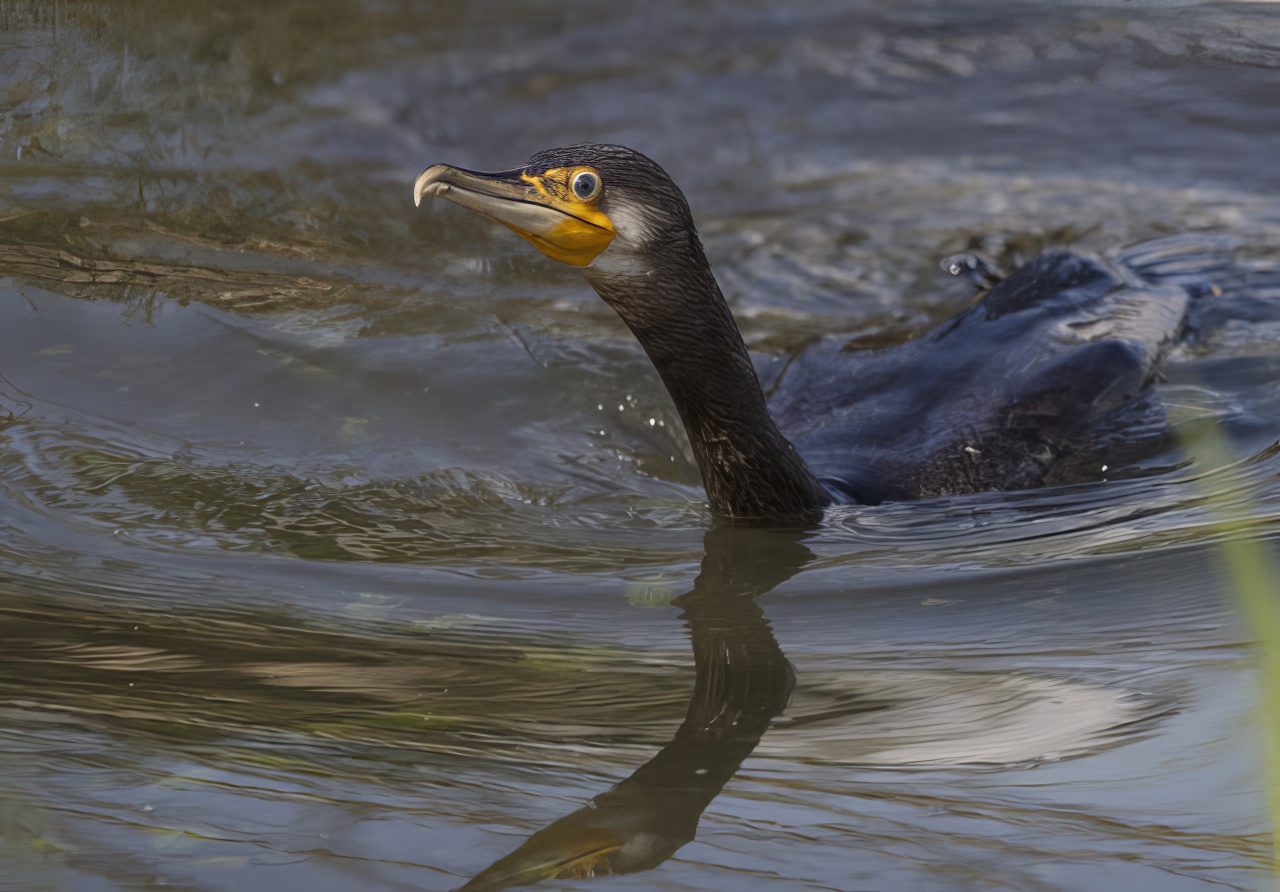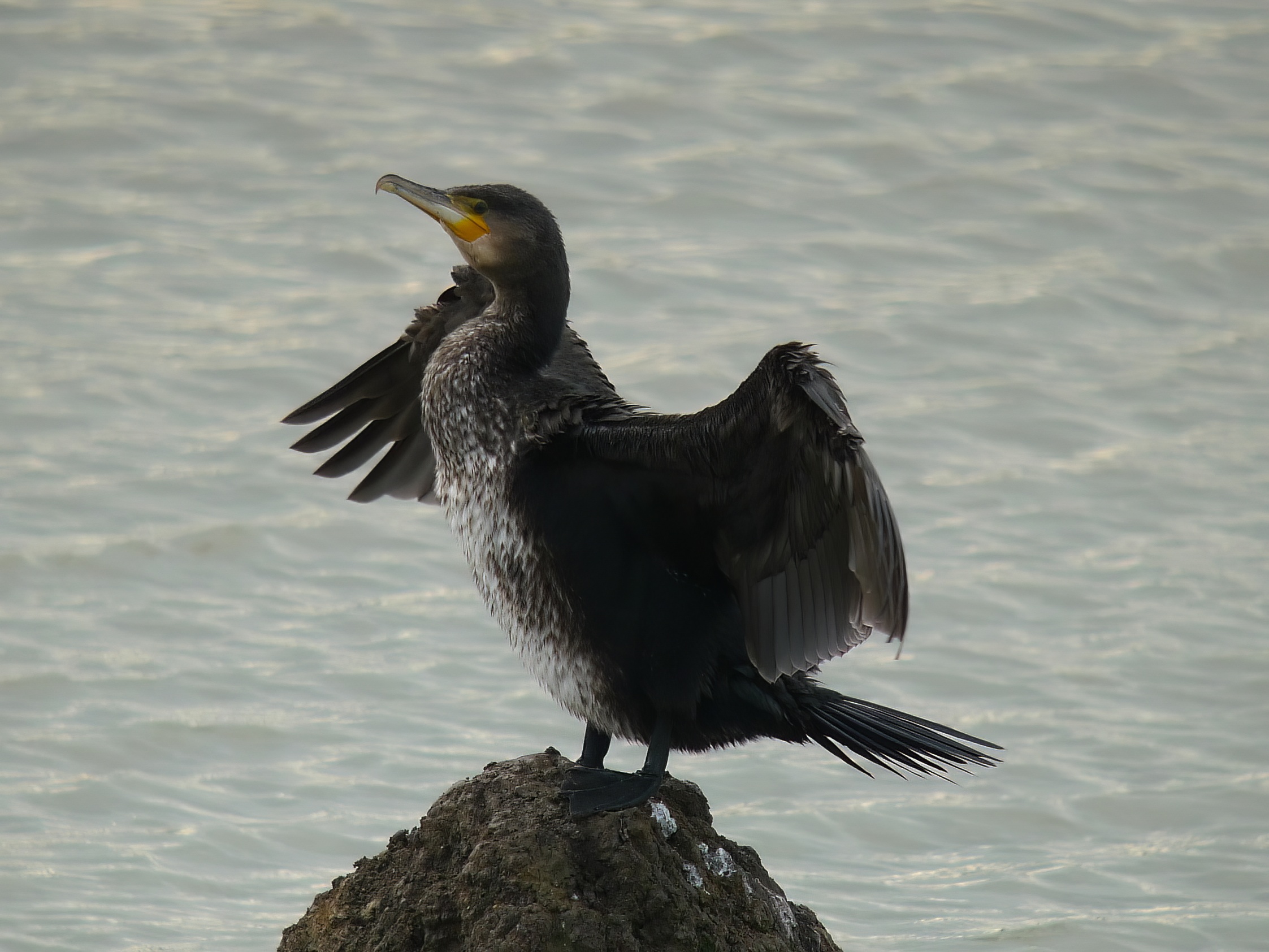Great Cormorant Phalacrocorax carbo
Common winter visitor, mainly coastal but increasing numbers inland and in summer.


Previously only a winter visitor, an inland breeding colony was established at Deeping Lakes in 1992 which had rapidly increased to 120 pairs by 1995. The colony has continued but had declined to around 26 nests by 2018. The Grey Heron Ardea cinerea heronry that shares the trees on the same island has also declined but whether this decline of both species is due to competition for nest sites, reduced fish availability or persecution from angling interests is not known. There are a handful of other growing colonies in the county and the largest of these is at the RAF Woodhall Spa Airfield LWT reserve and holds more than 30 pairs. The wintering population over the five years to 2018/19 has been around 1,400 birds with an estimated 600 inland, 500 on The Wash, especially Gibraltar Point, and 300 on the Humber. Summering and wintering birds are widespread in the county and can be encountered on most waterbodies from time to time. The bulk of the birds recovered in the county have come from both coastal colonies in Scotland (22) and Wales (17), as well as from inland colonies in England (37).
Cormorants at Deeping St. James: a new breeding species for Lincolnshire
by P. J. Precey
Note: This account is based on the article which first appeared in Lincolnshire Bird Report, 1992.
In the far south of Lincolnshire at Deeping St. James, immature Cormorants had been occasional visitors in ones and twos until the autumn of 1989. By the end of September that year, they had become a permanent fixture with up to seven birds seen on every visit. A routine was soon established with a daytime haul up on to an island in the larger of the two lakes and a nightly roost in a large tree by the smaller lake being swelled by birds feeding in the fens or in the nearby gravel pits. Numbers remained pretty constant in 1989, with the first adult seen on December 22nd.
On February 22nd, 1990, the first bird in breeding plumage was seen, and later there was display amongst the immature birds on April 10th, with an adult also present at the time. It was around this date that I heard of an inland colony in a heronry at Little Paxton in Huntingdonshire, and so hopes were raised that similar events could occur here, especially considering the 103 pairs of Grey Herons breeding nearby. However, things stayed quiet for another year but with a jump in autumn numbers, taking the roost to 33 birds.
In the spring of 1991, up to five adults were present in the 30-strong roost and two adults, one in breeding plumage, were seen displaying on March 17th. However, although 41 birds were present throughout the summer, there were no breeding attempts. Once again, the autumn roost increased, this time to 65 with 40 staying around to the end of the year; things looked set for another good year.
In the spring of 1992 adults were present right from the start of the year with 10 adults in breeding plumage present on February 15th. By the end of February some birds had taken to roosting away from their traditional tree in the large heronry, and some very active displaying and twig-carrying was seen on the daytime roost on March 15th when 34 birds were present. On April 29th three obvious pairs of displaying adults were found in the heronry and the roost tree was found to hold a large heron-like nest complete with sitting female and attendant male. On my next visit on March 3rd, two of the heronry pairs had started nest-building and from then on breeding activity continued apace. By June 16th a total of 16 nests were counted with 33 adults in attendance; all but one were in five Scots Pine trees in the heronry. One of the nests was occupied by a pair consisting of an adult male and an immature female. On June 21st, Cormorant was added to the list of Lincolnshire breeding birds when three velvety black and incredibly ugly chicks were found on the original roost tree nest. More chicks followed soon after with a brood of two on June 24th. The last nest was found on July 6th making a total of 17, with four more broods appearing on the same day, and on July 16th a total of 21 chicks were counted in nine nests with the original brood close to fledging. By July 24th 14 nests contained chicks but disaster struck one family when their nest collapsed in the night leaving the female standing on the nest branch and looking very sorry for herself for a good month afterwards. It soon became obvious that other nests were not as strong as they appeared and a second one collapsed on August 6th, thankfully after the single chick had fledged, and another seven nests had gone by the time the last chicks had fledged. One fall killed at least two chicks.
In total, at least 33 chicks hatched of which 30 fledged to become part of the record roost of 126 on August 16th.
Future thoughts
The future of this colony is not 100% assured as local anglers consider that 17 pairs of Cormorants is 17 too many. One colony of 14 pairs in Norfolk in 1990 was reduced to zero in 1991 by being “discouraged” from breeding in 1991 by persons unknown. However, Cormorants keep coming to the Deeping colony with 100+ birds now regularly attending, and colour-ringed birds have been observed from Abberton, Essex (2); Tenby, Dyfed; and one from Denmark.
(Account as per new Birds of Lincolnshire (2021), included September 2022)
